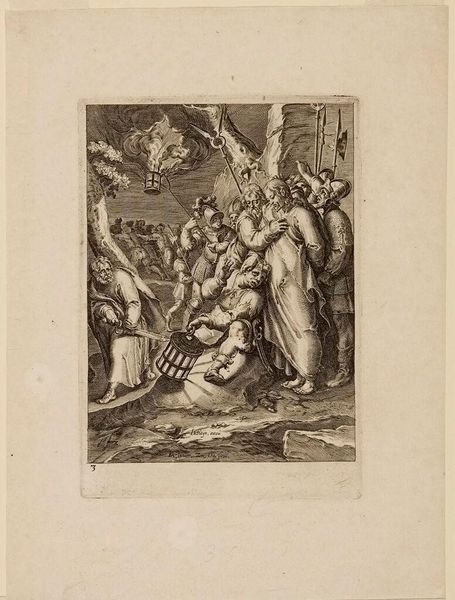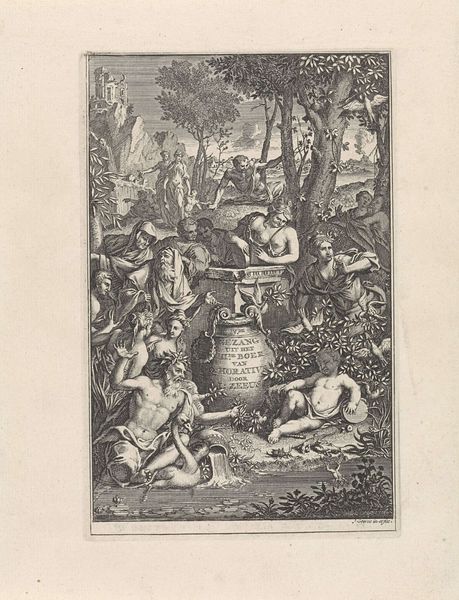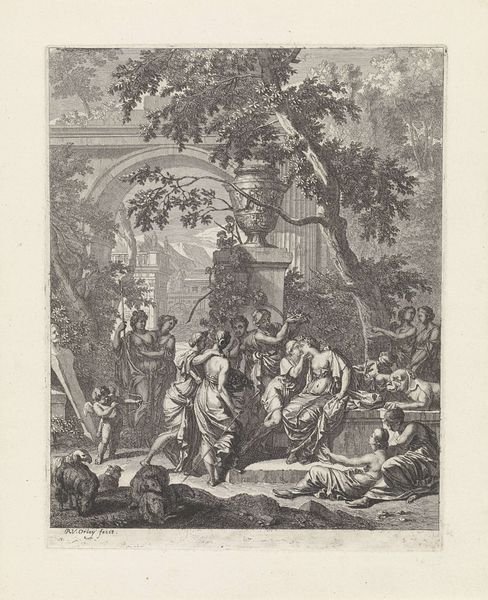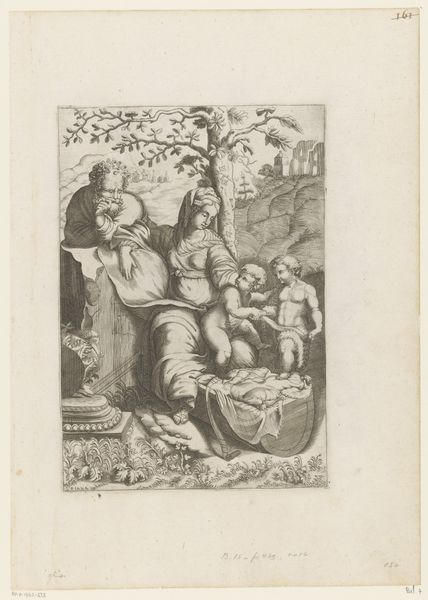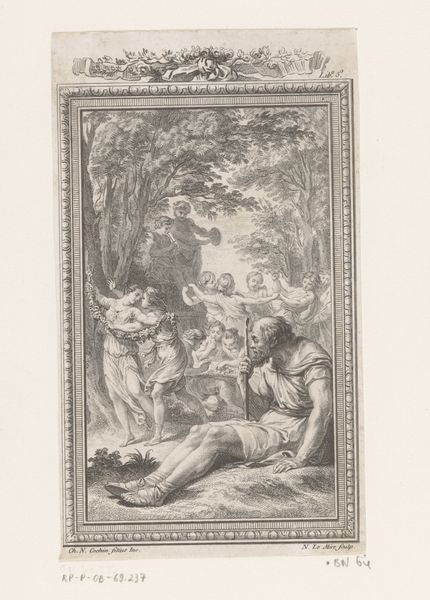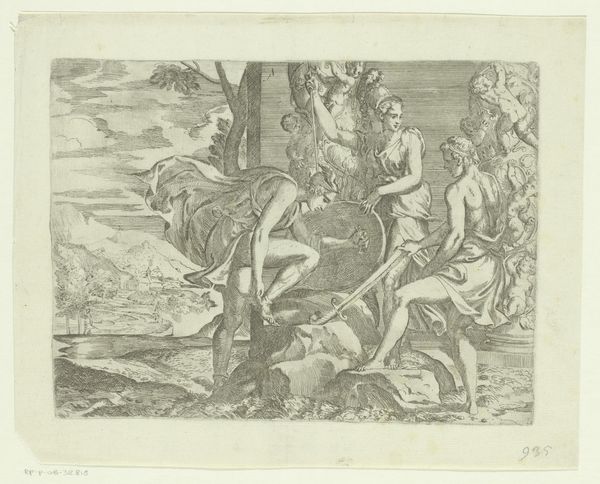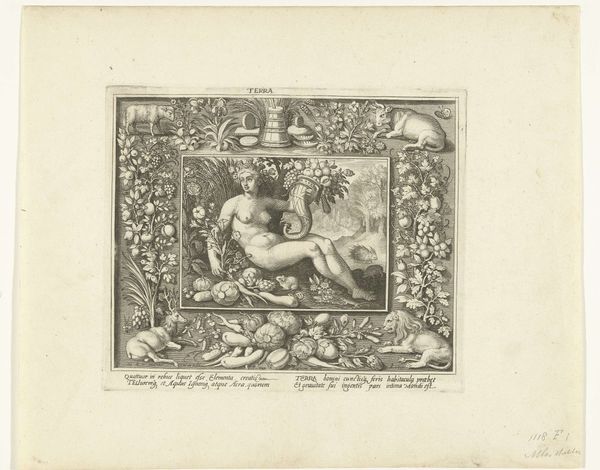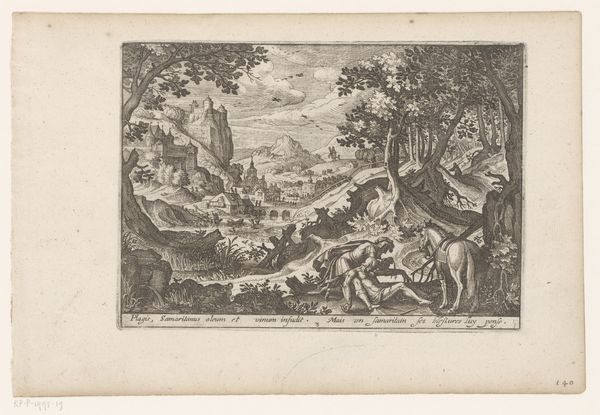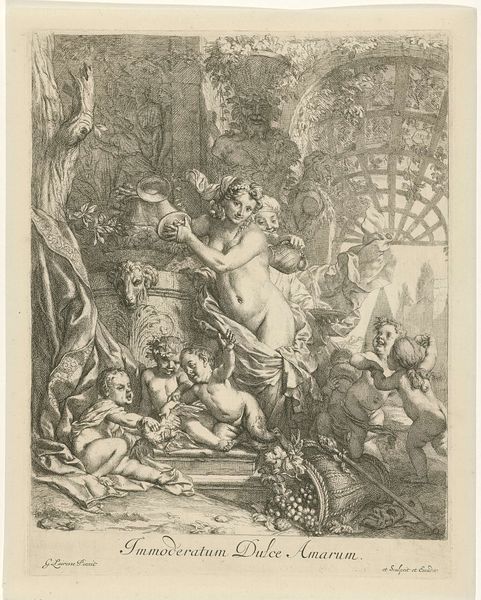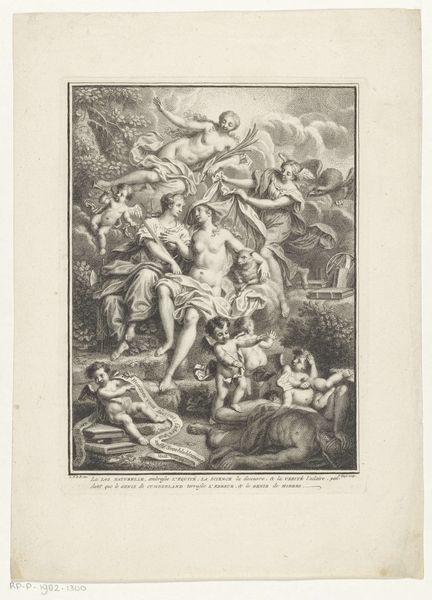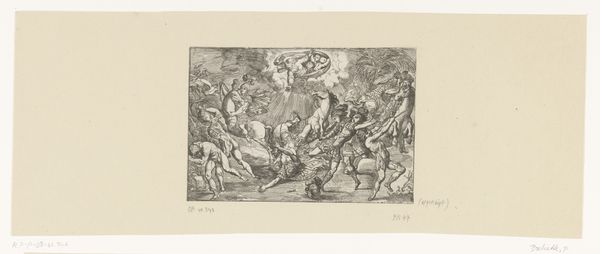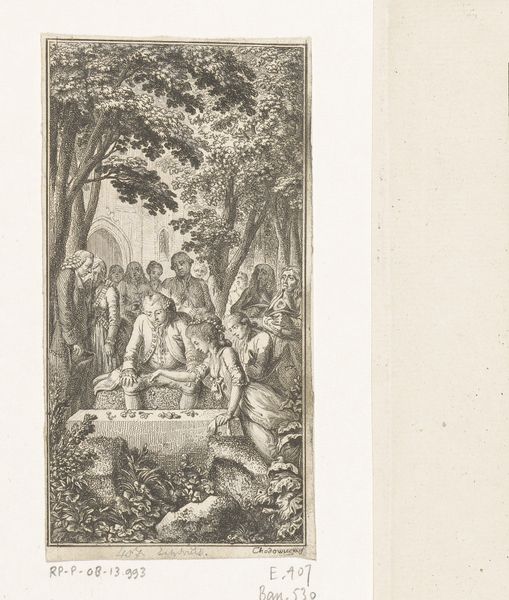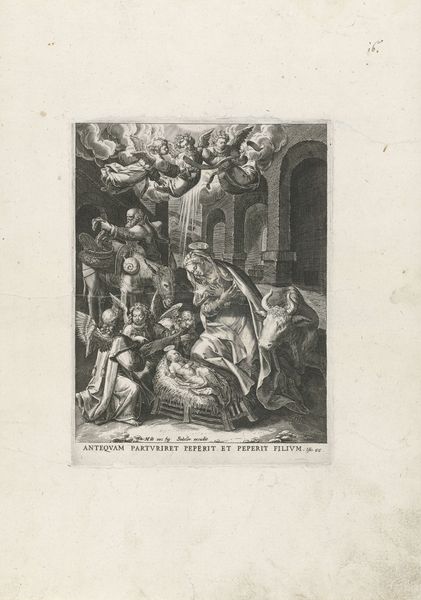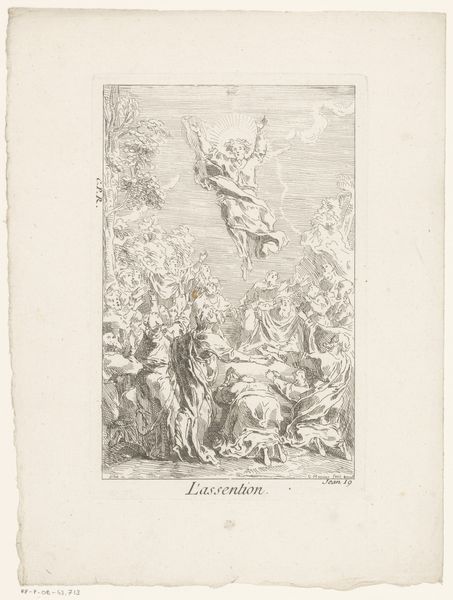
engraving
#
allegory
#
baroque
#
old engraving style
#
landscape
#
figuration
#
line
#
academic-art
#
engraving
Dimensions: height 216 mm, width 152 mm
Copyright: Rijks Museum: Open Domain
Curator: This delicate engraving is attributed to Arnold van Westerhout, dating back to 1687, and is titled "Allegory on the Resurrection of Christ(?)." What's your immediate reaction to this piece? Editor: I’m immediately struck by the subdued quality, a serene almost ethereal tone conveyed through delicate linework, which presents the piece’s potentially revolutionary subject in a particularly subdued, privileged tone. Curator: It is quite intricate, isn't it? Look closely at the technique. Van Westerhout employed a very fine line in creating this composition, using varied hatching and cross-hatching techniques to create shading and volume. Think about the labor involved in the act of creation here, the physical production required. This process allows the landscape setting to be given the same presence and detailed quality as the human figures in the scene. Editor: Absolutely, I'm curious to know what those precise choices are saying politically and religiously. This engraving presents not only an allegory of Christian resurrection, but potentially says more broadly about hope or personal rebirth and agency for oppressed people in a way that wouldn’t invite backlash from governing forces. What societal narratives are they tapping into? The banner reads "NEC DVA, NEC," possibly meaning "Neither two, nor...", adding layers to interpretations about wholeness, unity, or transformation. Curator: You make an excellent point about agency. Focusing on the materiality, note the physical object itself: paper, ink, metal plate. Who owned this print? Who could afford it? Was it widely distributed or a private commission? Considering these material factors contextualizes how narratives are formed and transmitted and to whom. Editor: And how that influences reception; because let's be honest, this work would definitely elicit vastly different responses across gender, class, and racial divides, given that its content, regardless of the artists’ intentions, centers white, gendered ideals and experiences. The cost, materials, and imagery of the work clearly align with very limited wealthy sectors of society. Curator: These layers really highlight how intricate the socio-economic history and artistic technique become. Examining that close relationship sheds some light on both our present and the past. Editor: Indeed, a work of this era provides critical points to assess prevailing ideas about art, power, and collective identity.
Comments
No comments
Be the first to comment and join the conversation on the ultimate creative platform.
